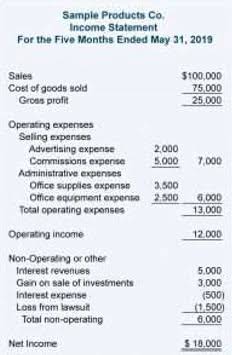The Basic Accounting Equation Formula & Explanation

Viewed another way, the corporation has assets of $16,300 with the creditors having a claim of $7,000 and the stockholders having a residual claim of $9,300. The accounting equation shows that one asset increased and one asset decreased. Since the amount of the increase is the same as the amount of the decrease, the accounting equation remains in balance. The remaining parts of this Explanation will illustrate similar transactions and their effect on the accounting equation when the company is a corporation instead of normal balance a sole proprietorship. The accounting equation reflects that one asset increased and another asset decreased.

Accounting Equation for a Corporation: Transactions C1–C2
- According to the equation, the assets of the business are equal to the equity and liabilities.
- Get instant access to video lessons taught by experienced investment bankers.
- Equity is any amount of money remaining after liabilities are subtracted from assets.
- For every transaction, both sides of this equation must have an equal net effect.
This simple equation forms the foundation of double-entry bookkeeping, ensuring every debit has a corresponding credit. In practice, maintaining the balance of the accounting equation may involve multiple accounts. For example, purchasing inventory on credit increases both the inventory account (an asset) and the accounts payable account (a liability).

Double-Entry Bookkeeping and the Accounting Equation
Although Car Dealership Accounting owner’s equity decreases with a company expense, the transaction is not recorded directly into the owner’s capital account at this time. Instead, the amount is initially recorded in the expense account Advertising Expense and in the asset account Cash. The accounting equation remains in balance since ASC’s assets have been reduced by $100 and so has the owner’s equity.
- The elemental and unchanging concepts that are essential in modern accounting are that a company’s owner or shareholder equity will increase when assets increase.
- When a company buys an asset, for example, the asset account on the balance sheet increases, while the cash account decreases.
- We’ll explain what that means, along with everything else you need to know about the accounting equation as we go on.
- It lets you easily create e-invoices by clicking on the Generate e-Invoice button.
- However, equity can also be thought of as investments into the company either by founders, owners, public shareholders, or by customers buying products leading to higher revenue.
- Thus, these problems should be noted by all companies and strict method of valuation and recording of transactions should be done to control such problems.
- The Strategy score measures alignment of supplier strategies with customer requirements in a 3-5-year timeframe.
How the Accounting Equation Relates to the Balance Sheet
It will become part of depreciation expense only after it is placed into service. Since ASC has not yet earned any revenues nor incurred any expenses, there are no amounts to be reported on an income statement. The calculation of net worth for a business uses the assets and liabilities shown in the balance sheet. This means that it reflects the carrying value of the assets and liabilities and not necessarily their market value. To see this report showing the accounting equation, check out the lesson on the balance sheet. Not only does the accounting equation underpin all accounting entries, but it also forms the exact structure of one of accounting’s most important reports – the balance sheet.

The total dollar amounts of two sides of accounting equation are always equal because they represent two different views of the same thing. The accounting equation is based on the premise that the sum of a company’s assets is equal to its total liabilities and shareholders’ equity. It’s a core concept in modern accounting that provides the basis for keeping a company’s books balanced across a given accounting cycle. The accounting equation is a concise expression of the complex, expanded, and multi-item display of a balance sheet.

Accounting Software
The Accounting Equation serves as a valuable tool in financial analysis, enabling analysts to evaluate a company’s financial health and stability. By analyzing the components of the equation, financial analysts can gain insights into the company’s assets, liabilities, and equity. Each example shows how different transactions affect the accounting equations. If your business has more than one owner, you split your equity among all the owners. Include the value of all investments from any stakeholders in your equity as well. Subtract your total assets from your total liabilities what is basic accounting equation to calculate your business equity.

Comentarios recientes